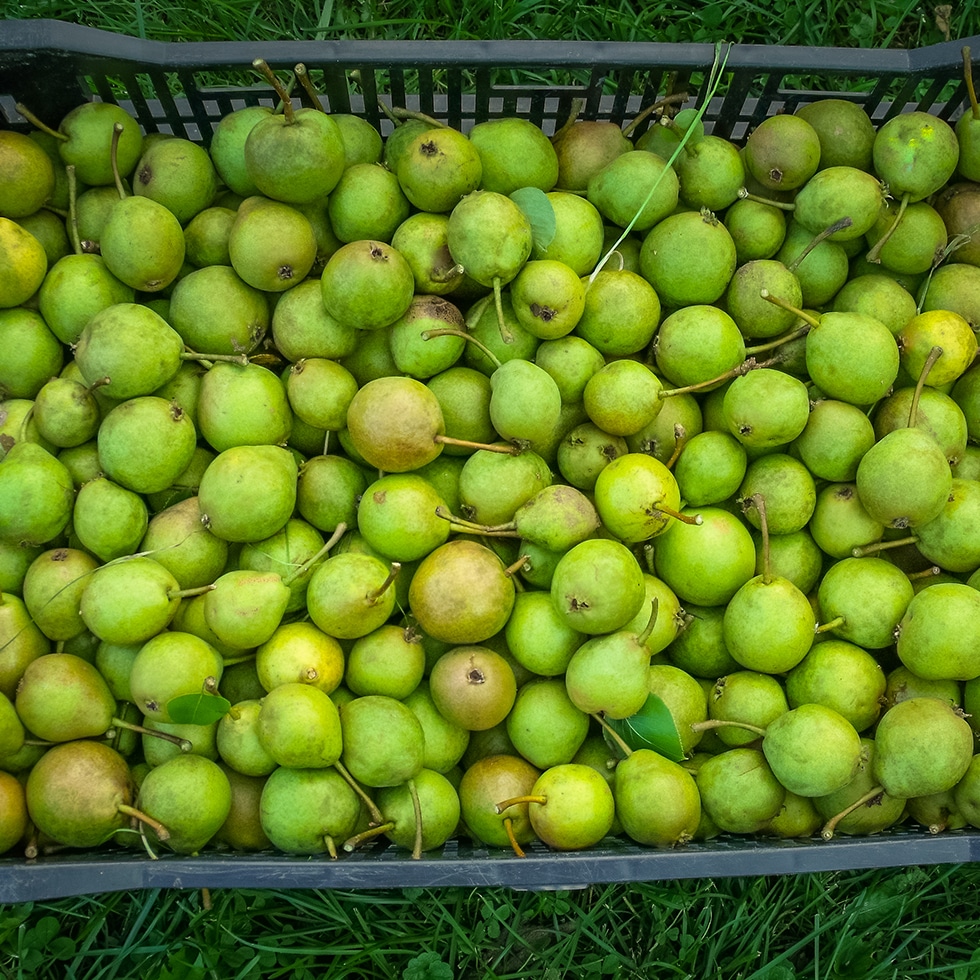Ure Pear Tree
- Zone 3Characteristics of the tree

Ure is an exceptionally hardy, productive and disease-resistant pear tree. The pear is small – but what it lacks in size, it easily makes up for in taste! It is sweet and juicy, a delicious treat when fresh off the tree. The fruit must be eaten fast or used in canning, however, as it does not store well.


Ure is a small but very tasty pear measuring between 4 and 5cm. It has a rather thick skin, light green or yellow in colour with darker green lenticels.
Its flesh is tender and juicy with a sweet and pleasant flavour, excellent for fresh eating.
The pears also appear to be resistant to being bitten by insects, they had no sign of insect damage while all our other pears did.
The pears do not keep well, so they must be eaten fresh, used in cooking or preserved within about one week.
Ure is a cross between the Ussuriensis (Siberian) pear and the European or common pear. It is hardy up to zone 3a, making it one of the hardiest pear tree varieties.
It is highly productive, and very resistant to fire blight, the most important disease to attack pear trees. Note that it is self-sterile, and will need to be pollinated by another pear tree.
Ure is an interspecific cross between Pyrus ussuriensis and Pyrus communis (our usual domestic pear). It was discovered at the Morden research station in Manitoba in 1978.
Pear trees have a very vigorous and upright growth habit; becoming taller than apple trees (10 m/35 ft in height at maturity) but spreading less wide (6 m/20 ft) Their height can be controlled somewhat with rigorous pruning, but only to a certain degree. All going well, these trees will live for about 200 years, providing fruit for several future generations.
You should note that this illustration is meant only to give a general indication of what you can expect, and the growth of your tree might look somewhat different. The development of a tree depends on the soil type, irrigation, fertilisation and climatic conditions.

All our pear trees are sold bare-root, without pots. They have been cultivated directly in the soil, and are taken out of the ground to be shipped to you during their period of dormancy. Bare-root trees do not take up much space, and can be therefore shipped by mail all over Canada!
Pear trees have a naturally small root system – do not be surprised if your pear tree seems to have fewer roots compared to the other trees you receive! This photo shows a 3-foot-tall pear tree, similar to one you would receive. Depending on the height that you select when you order a pear tree, it could be smaller (1-2 feet) or taller (3-5 feet).

Our pear trees are propagated by grafting, on rootstock that we produce at the nursery. For pear cultivars that are hardy in zone 3, we use Pyrus ussuriensis rootstock for its vigour and hardiness (zone 2, growing in Alaska). For cultivars that are hardy in zone 4, our rootstock consists of either Pyrus ussuriensis, or seedling pear trees born from the trees in our orchard in zone 4.

About half of the pear trees we offer are self-fertile and can produce fruit on their own, though they will always give better yields with a pollinator. The rest are self-sterile, and cannot produce fruit without pollination from a different cultivar. Therefore, if you only have space for one tree, you might want to use the filter to see only self-fertile cultivars.
Provided it is grown in good conditions and properly cared-for, your pear tree will begin to bear fruit by around 5 years on average, although this can vary depending on your location and the fertility of your soil. Be sure to also have a look at our articles on how to plant and care for your growing tree!


















